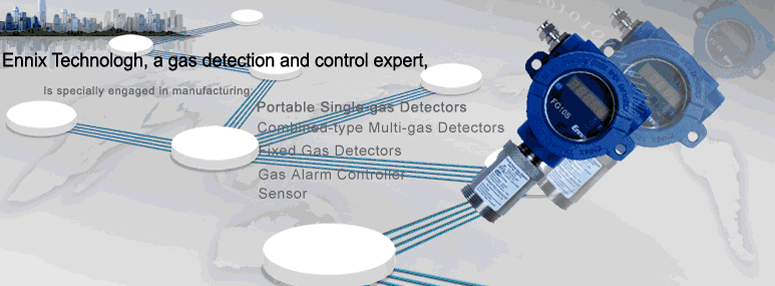|
|
|
 |
|
| |
l The instrument can be equipped with dozens of kinds of sensors such as electrochemical, catalytic, non-dispersive infrared (NDIR) and photo-ionization detector (PID) sensors in order to meet users’ different demands;
l The instrument can not only display the concentration of a dangerous gas in real time but also calculate the TWA and STEL values of a toxic gas and display the results on the LCD as per corresponding instructions;
l The instrument possesses analog, digital and on/off signal outputs simultaneously;
l The ultra-large LCD screen is equipped with ultra-bright backlight, convenient for reading;
l Its Protection Classification can exceed IP66;
l One key recovery function enables you to not worry about wrong operations. |
|
Part No.
|
90005000-P1
|
|
Gas Detected
|
Organic vapor , VOCs
|
|
Sampling Method
|
Diffusion
|
|
Gas Sensor
|
PID sensor
|
|
Measure Range
|
0~100,200,1000,2000ppm
|
|
Resolution
|
0.1 or 1 ppm
|
|
Response Time
|
Less than 30 seconds
|
|
Power Supply
|
Voltage: (15~30)VDC, electricity: 80mA
|
|
Electric Interface
|
3/4’’NPT
|
|
Display
|
Displayed with large screen LCD
|
|
Alarm method
|
3-LED lights alarms
|
|
Signal Output
|
Analog signal(4~20)mA, loading resistance: 500Ω
|
|
Digital signal RS485 ModBus RTU communication protocol
|
|
On/off signal: 3 relays
|
|
Wiring Method
|
Triple wire system; Power, GND, Signal
|
|
Protection Classification
|
IP66
|
|
Environment Temperature
|
-20℃~ 50℃
|
|
Environment Humidity
|
15%~ 95% relative humidity (standard)
|
|
Explosion-Proof
|
Ex d IIC T6
|
|
Size
|
209mm*133mm*110mm (length*width*height)
|
|
Weight
|
2.2 kg
|
|
Materials of the cases
|
Casting aluminum and stainless steel
|
|
Volatile organic compounds (VOCs) are organic chemicals that have a high vapor pressure at ordinary, room-temperature conditions. Their high vapor pressure results from a low boiling point, which causes large numbers of molecules to evaporate or sublimate from the liquid or solid form of the compound and enter the surrounding air. An example is formaldehyde, with a boiling point of –19 °C (–2 °F), slowly exiting paint and getting into the air.
Many VOCs are dangerous to human health or cause harm to the environment. VOCs are numerous, varied, and ubiquitous. They include both man-made and naturally occurring chemical compounds. VOCs play an important role in communication between plants. [1] Anthropogenic VOCs are regulated by law, especially indoors, where concentrations are the highest. VOCs are typically not acutely toxic, but instead have compounding long-term health effects. Because the concentrations are usually low and the symptoms slow to develop, research into VOCs and their effects is difficult.
|
|
|
|


